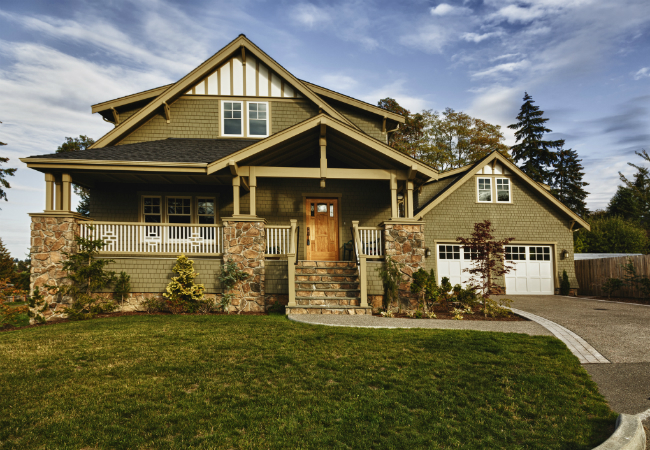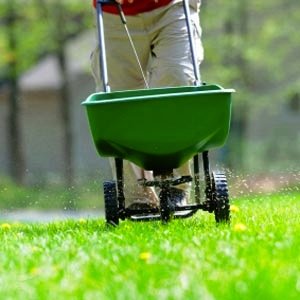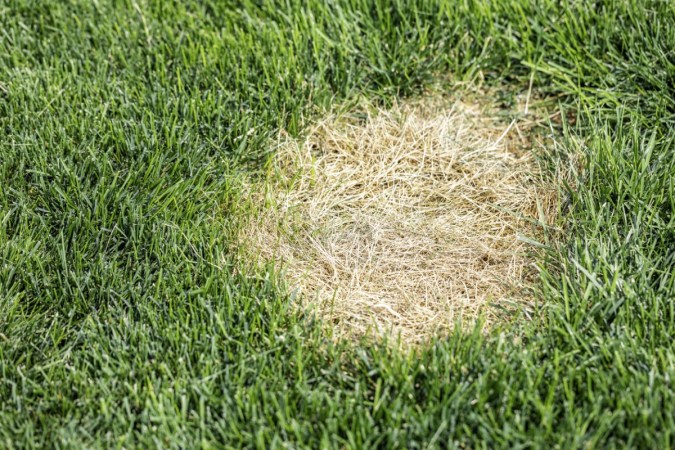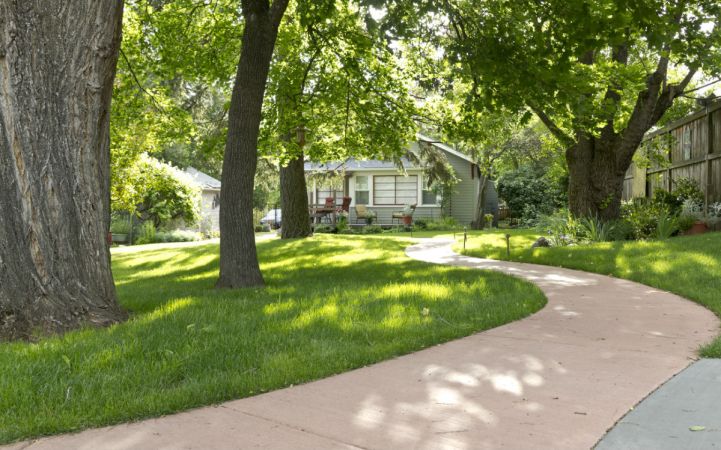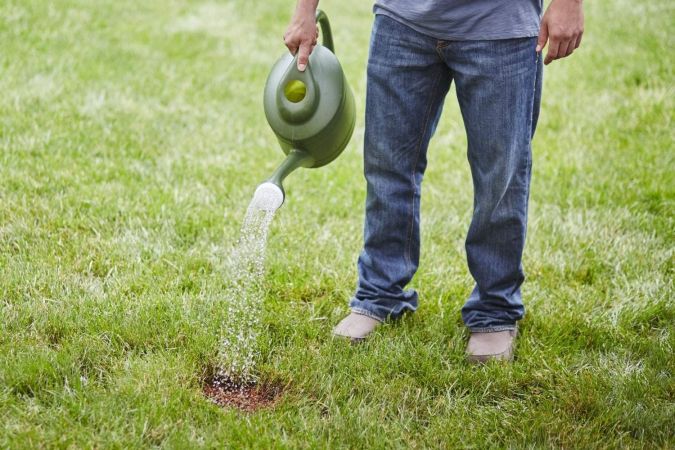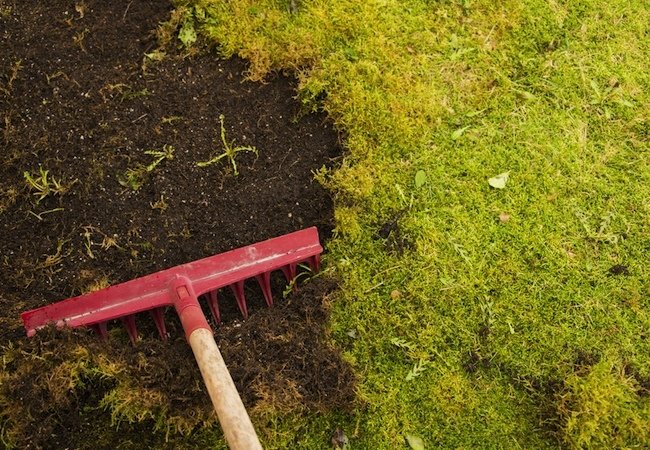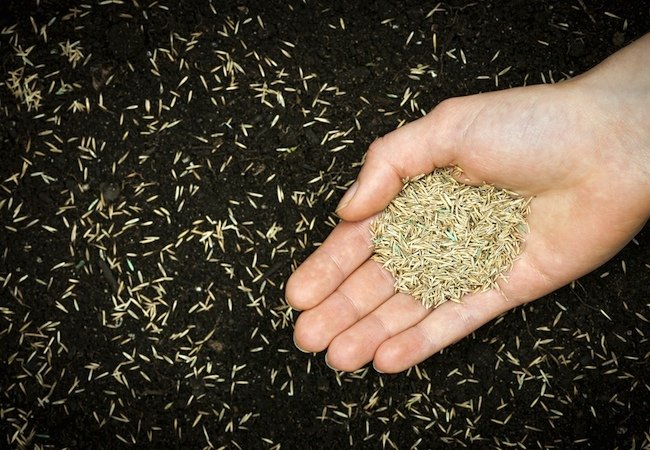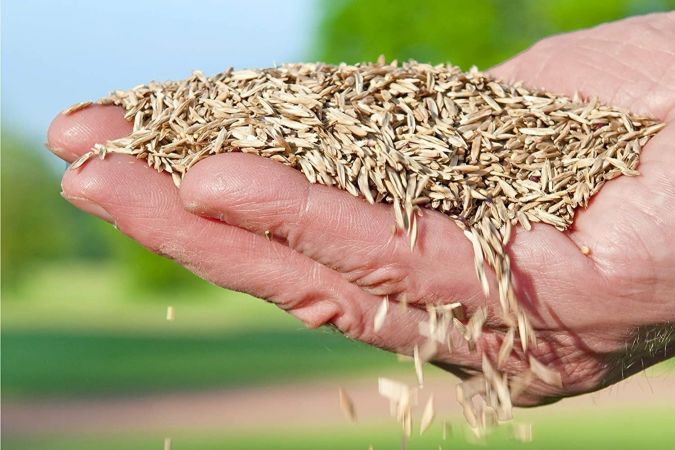We may earn revenue from the products available on this page and participate in affiliate programs. Learn More ›
Q: I started seeing brown patches on my lawn at the end of spring. They seem to have grown in size and number since then. What’s causing this, and how can I correct it before it takes over my turf?
A: Brown patches of dormant, dead, or dying turf is hardly unusual, as they plague grasses of all varieties and can be caused by a number of factors ranging from extreme weather and poor soil conditions to pests and fungus. Whatever the culprit, brown grass should be assessed and addressed ASAP: If the underlying problem is severe enough, the pesky patches could eventually destroy your lawn. So find out the cause early and treat your turf accordingly to restore it to its former green glory.

Wait out drought—or water properly.
If brown grass appears or worsens with scorching temperatures, and fallen tree leaves on the surrounding lawn have shriveled, this can be a sign that the problem is drought. It’s natural for grass to go dormant to conserve water during periods of limited rainfall, and drought-induced brown grass should turn green on its own as the weather cools and rainfall increases. You can also restore your lawn by giving it an inch of water on a weekly basis with your lawn sprinkler. You may need to adjust a sprinkler head to ensure that there are no spots on the lawn that the sprinkler isn’t reaching. Remember to water early in the day, before the sun’s heat burns off the water.
Restore your soil’s pH balance.
When soil pH is too “alkaline” or acidic, iron chlorosis, a type of iron deficiency affecting plants, can take root in your lawn and lead to yellow—or in severe cases, brown—patches. Check your soil pH is with a home soil testing pH kit available at your local home center or nursery for about $10 (view example on Amazon).
If the pH is higher than 7.2, apply sulfur to your lawn as a short-term solution for lowering soil pH and improving the color of grass. Generally, the higher the starting soil pH and the “loamier” or more clay-based the soil, the more sulfur it needs. Sandy soil with a starting pH of 7.5, for example, only needs 10 to 15 pounds of sulfur per 1,000 square feet to reach an optimal soil pH of 6.5, while a loamy soil of the same pH needs 20 to 25 pounds of sulfur per 1,000 square feet. As a long-term solution, reduce the frequency with which you water the lawn, as over-watering reduces iron uptake in grass and can lead to repeat cases of yellowing or browning.
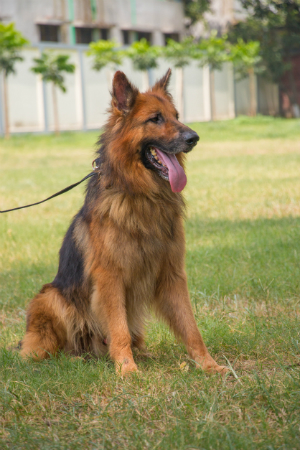
Lay off the fertilizer.
Excess salt from fertilizer can build up in grass, scorching it and turning it brown. Your lawn might have this “fertilizer burn” if brown spots appear one to two days after fertilizing the lawn and the spots follow the pattern of where you applied the fertilizer. Act fast to beat the burn, watering until the ground is thoroughly saturated to help leach excess fertilizer out of the grass’ root zone. Then apply an inch of water to the lawn each day for the next seven days to flush out the fertilizer salts from the grass roots. If grass fails to re-grow completely, you can either sow new grass seeds or lay sod over dead turf spots. In the future, avoid over-feeding the lawn by applying fertilizer only in the manufacturer-recommended amount and frequency. Choose slow-release fertilizers to improve absorption and reduce the risk of fertilizer burn.

Weed wisely.
Weeds and tree roots siphon vital nutrients from fertilizer and water that would otherwise go to grass, leaving you with a dry brown lawn. To treat, dig up the weeds or spray the lawn with a selective herbicide that targets weeds but leaves the grass undamaged. Follow up weed removal by spraying pre-emergent herbicide over the lawn to prevent new weed seeds from sprouting.
Fight the threat of fungus.
Fungus thrives in hot, humid, moisture-rich environments, and stagnant water on your lawn helps it fester. Once conditions like Brown Patch Disease take root, you might notice thinned-out brown grass in a ring-like pattern, possibly affecting a large area of turf. If you spot these symptoms, apply fungicide to smaller affected areas, or call in a lawn care specialist if the problem is widespread. Avoid over-dousing your lawn, and stick to a morning watering schedule, to keep fungus at bay. To reduce the risk of fungal disease, mow the lawn weekly, aerate it twice a year, and clear thatch (shoots, stems, and roots that accumulate on the soil surface) when it rises to about an inch in height.
Don’t let your lawn be grub for grubs.
Grubs, the larvae of beetles, spend their summers feeding on the roots of turf grass—and as the grass decays, brown areas emerge. To determine if this is a problem, simply dig into one of the brown patches and look for milk-white creatures curled up into a C-shape. If you spot 10 or more of these grubs per square foot of sod, a grub infestation is the likely culprit of your lawn’s brown patches. To be rid of the pests, apply either a chemical like carbaryl or natural grub control like nematodes (roundworms) over the lawn. In two to three weeks, new green shoots should start to emerge.
Have pets do their business elsewhere.
You love your furry friends, but canine and feline urine contains salts that can kill grass and leave behind round, brown dead patches that aren’t likely to go green on their own. Revive dead turf by covering it with a layer of ground limestone (2 to 5 pounds per 100 square feet) to restore the soil’s pH balance, then let the limestone sit for a week before covering it with topsoil and planting new grass seeds. In the future, you can replace an area of your lawn with mulch and let your pets “go” there—or better yet take them for walks!

